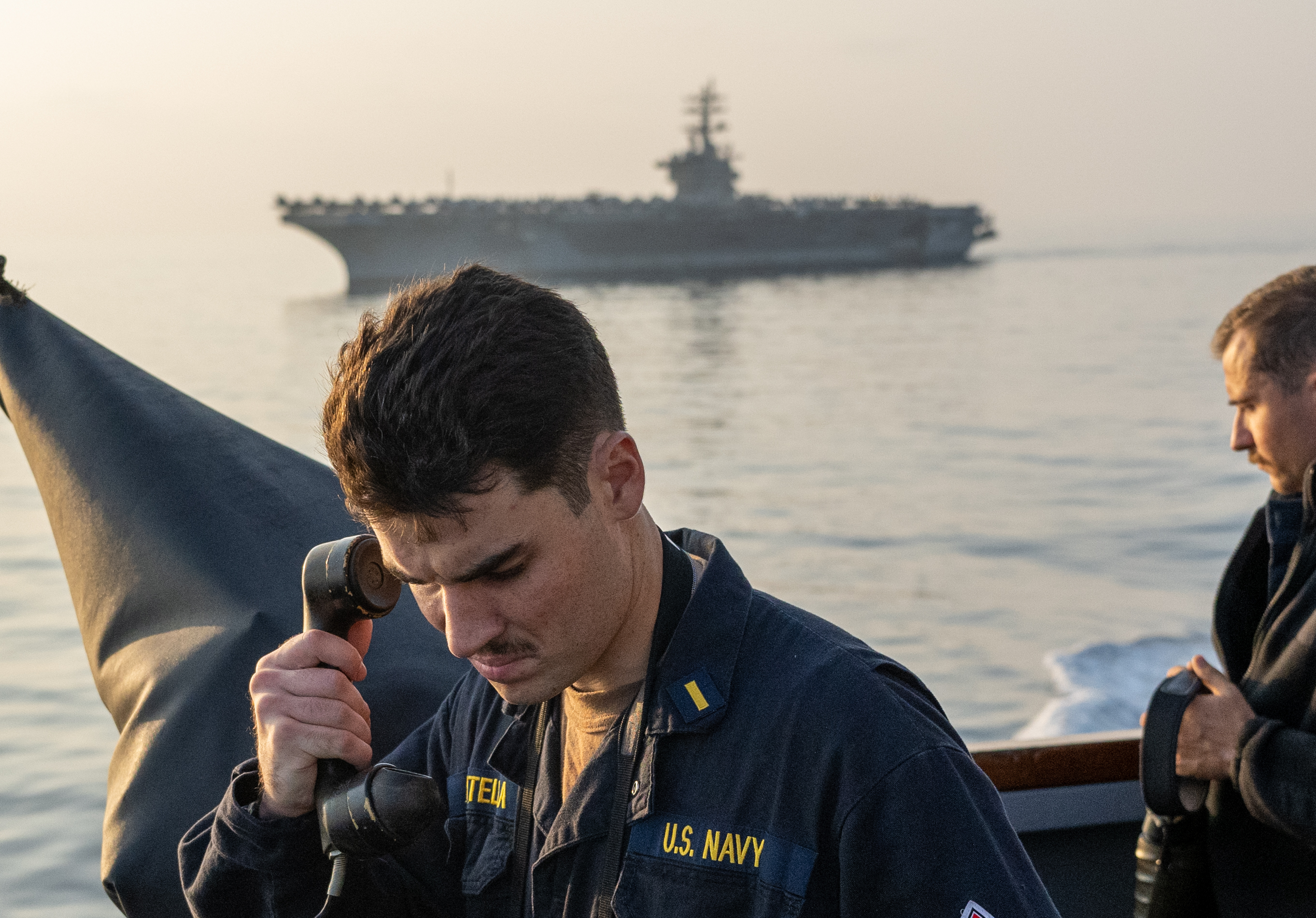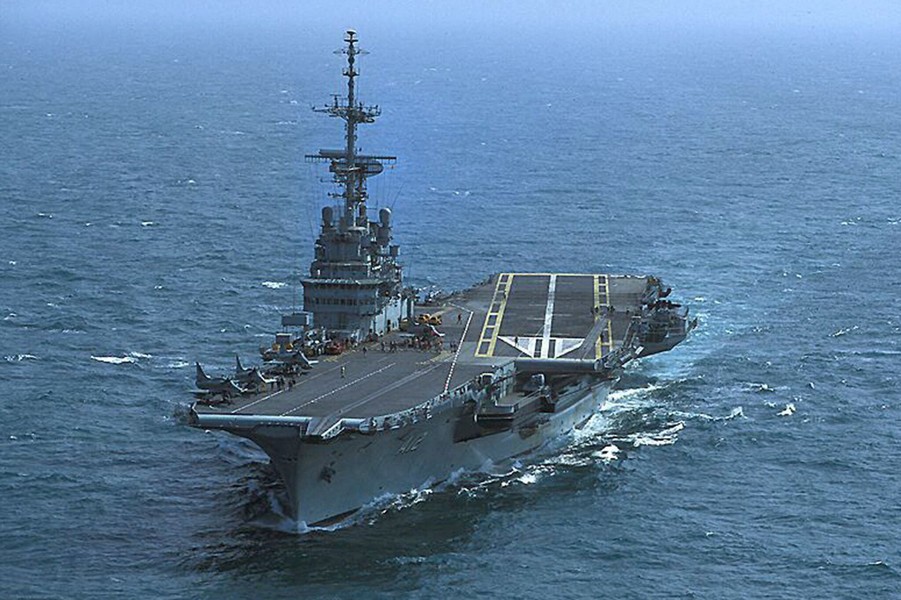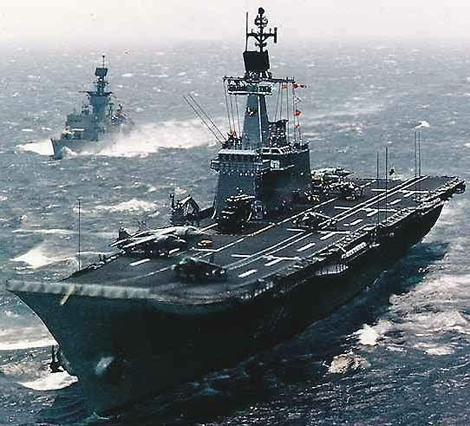This post has been updated to correct that USS Dwight D. Eisenhower (CVN-69) did not make a port call in Bahrain in December.
 Ens. Hunter Riportella relays information from the bridge aboard the Arleigh Burke-class guided-missile destroyer USS Mason (DDG-87) during a vertical replenishment with the Nimitz-class aircraft carrier USS Dwight D. Eisenhower (CVN-69) while the ships operate in support of Operation Prosperity Guardian (OPG) in the Red Sea, Jan. 8, 2024. US Navy Photo
Ens. Hunter Riportella relays information from the bridge aboard the Arleigh Burke-class guided-missile destroyer USS Mason (DDG-87) during a vertical replenishment with the Nimitz-class aircraft carrier USS Dwight D. Eisenhower (CVN-69) while the ships operate in support of Operation Prosperity Guardian (OPG) in the Red Sea, Jan. 8, 2024. US Navy Photo
After almost four months on station in the Red Sea, USS Dwight D. Eisenhower (CVN-69) and USS Gravely (DDG-107) transited the Suez Canal on Friday, the Navy announced.
Ike, the flagship of the Dwight D. Eisenhower Carrier Strike Group, and Gravely are now in the Eastern Mediterranean, according to a news release from U.S. Naval Forces Europe-Africa. It is unclear how long the two ships will remain in the Med.
The Ike Carrier Strike Group deployed on Oct. 13 and headed toward the Red Sea, where it participated in Operation Prosperity Guardian.
Aircraft from Ike and Gravely shot down several Houthi drones and anti-ship missiles while in the Red Sea, according to USNI News’ timeline.
“The Dwight D. Eisenhower Carrier Strike Group has delivered exceptional naval power in the U.S. 5th Fleet for the last five months,” said Rear Adm. Marc Miguez, commander of the Ike CSG, in the release.
“Reentry into the U.S. 6th Fleet is only a small gesture of our ability to project combat superiority to any part of the globe.”
The release did not include the locations of USS Mason (DDG-87) and USS Philippine Sea (CG-58), the other destroyer and cruiser that make up the Ike CSG.
Like Gravely, Mason has shot down a number of Houthi missiles and drones as part of the U.S. response in the Red Sea and Gulf of Aden.
The last time Ike was scheudle to make a port call in Bahrain ahead of its shift to the Red Sea in late December, but the visit was cancelled.
Ike is expected to be replaced by the Harry S. Truman Carrier Strike Group, which was in the Western Atlantic conducting an exercise, as of Monday, according to USNI News Fleet and Marine Tracker.

Ike‘s departure from the Red Sea leaves U.S. Central Command region without a carrier strike group or amphibious ready group for the first time since October, when the Houthi attacks began following the Hamas attacks on Israel and the subsequent Israeli bombardment of Gaza.
The Houthis appeared to slow their Red Sea attacks with a gap between April 16 and April 24.
The Yemen-based group has fired anti-ballistic missiles and drones over the Gulf of Aden on April 24 and 25, according to Central Command releases.

It is not clear what led to the pause. Pentagon Press Secretary Maj. Gen. Pat Ryder referred reporters to the Houthis.
“Well, again, in terms of the Houthi mindset, in terms of why they opted to not conduct attacks for a couple of weeks, that’s really something best left for them to address,” Ryder said during a Thursday press conference.
“I would say that regardless, our focus hasn’t shifted, which is working with our international partners to ensure the freedom of navigation through the Red Sea.”
Houthi leader Abdul-Malik Badruldeen al-Houthi took to Telegram Thursday to highlight the movement of American ships out of the Red Sea.
“The American naval presence has shrunk, and many of its warships have disappeared and have spread to the outskirts of the Red Sea,” according to a translation of the Telegram post.





